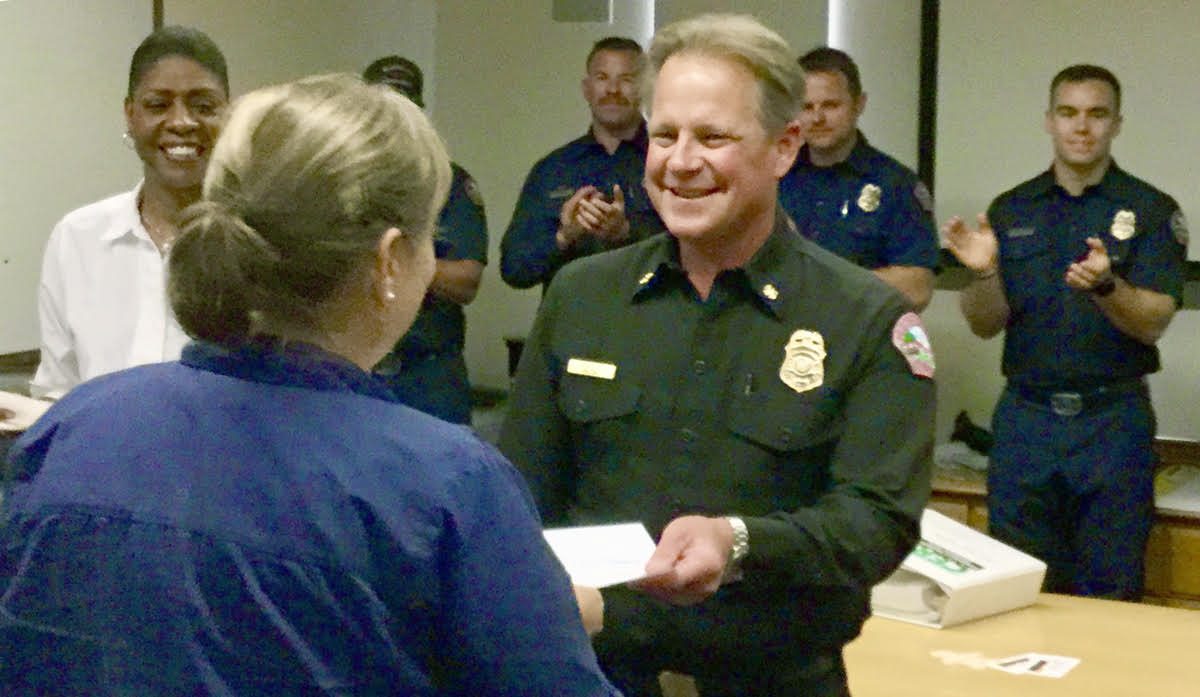MERRAG’s Volunteer Responders Get CERT-ified
Montecito Emergency Response & Recovery Action Group’s First Community Emergency Response Team Graduates

Montecito has long recognized that being prepared for fires or other disasters is the best way to bounce back from them. Its community group MERRAG, pronounced “mirage” and an acronym for Montecito Emergency Response & Recovery Action Group, holds prep trainings every month — and has almost since its inception in 1987. This November, the group just certified its first Community Emergency Response Team (CERT) class in a single 20-hour course with the Montecito Fire Department.
MERRAG owes its founding to the late former Montecito fire chief Herb McElwee. “Herb’s fire department then was even smaller than today’s,” said Sue Ziliotto, who has been a member of MERRAG for years. “Maybe three engines and one or two brush trucks,” she recalled. “About nine guys on duty at a time.” She said McElwee decided he needed help from the community to be able to respond to a major disaster. “He started the training classes,” Ziliotto said, and through them, MERRAG members learned how to assist the fire department effectively.
Today, MERRAG members open information centers during emergencies so that the firefighters can do their jobs. “People would drive to the fire stations for information when they couldn’t get through on the telephone,” Ziliotto recalled. “The department was too busy to stop and talk,” she said, so the MERRAG volunteers offer information, which helps the community feel more at ease. Members have established a base radio system in a communications van, and it also has people throughout Montecito who can report in from their neighborhood during an emergency.
“We have refresher courses all year long,” Ziliotto said of the MERRAG program, and they recently added a class in emergency preparedness for pets when people began to express the need. The fire extinguisher class is hands-on: “We have a big fire pan and enough extinguishers so that everyone can have a chance. We teach them how to pull the pin and how to spray at the bottom and sweep.” It’s not like what you see on television, Ziliotto warned.
One of the hardest classes is the one on triage, Ziliotto said. With many people injured and scant medical supplies or personnel immediately there, triage training means they need to learn to rate an injured person’s chance of survival. “When you clear their airway and they still can’t breathe,” she said somberly, “you just have to go on and help the person who will survive.” The volunteers learn to triage survivors into areas marked red, green, yellow, and black so that when the first responders get there, they know who needs their help the most.
A recent scenario MERRAG is contemplating, said Ziliotto, is an earthquake that clogs Montecito’s small roads and driveways, forcing people to be on their own for two weeks. “We used to think it was a minimum of 72 hours on our own,” she said, “but after the debris flow, we realized it could take much longer to get services restored.”
With that in mind, the county and the state are requesting two things of residents: A meeting at Montecito Union School on Thursday, December 5, at 5:30 p.m. will bring first responders and the community together to unveil a new interactive map that identifies properties at risk of debris flow or flooding. With the winter season oncoming, the map has been developed and includes the most up-to-date information since the 2018 debris flow.
The second is a survey by the California Department of Housing and Community Development for survivors of the 2017-2018 fires and mudflow to see who might still be in need of housing help following the disaster. It’s for homeowners, renters, and landlords alike. Go to recover.hcd.ca.gov and click the “eGrants Login” line at the upper left. At the next window, click “register” on the left to begin.



